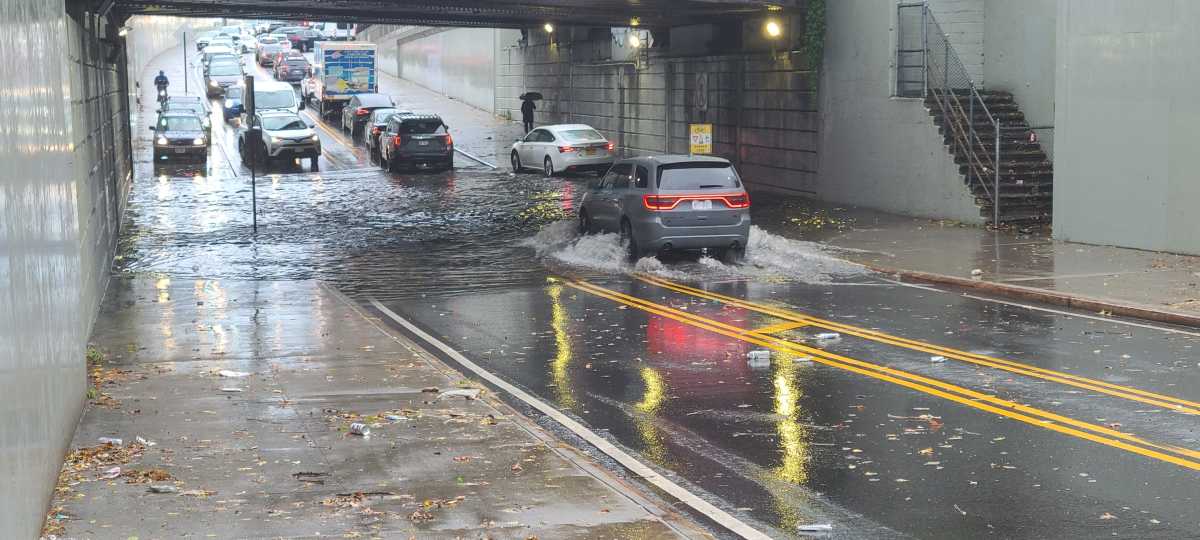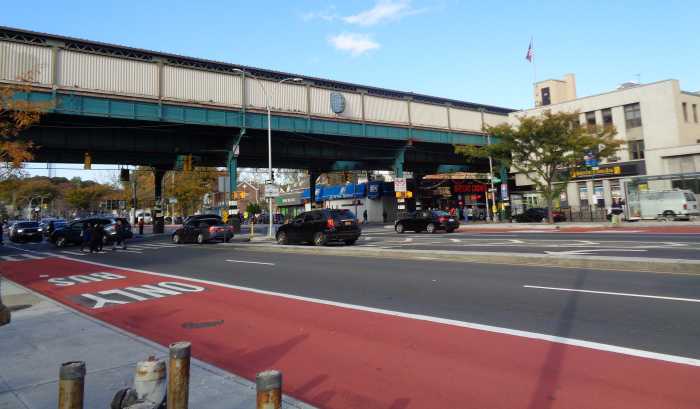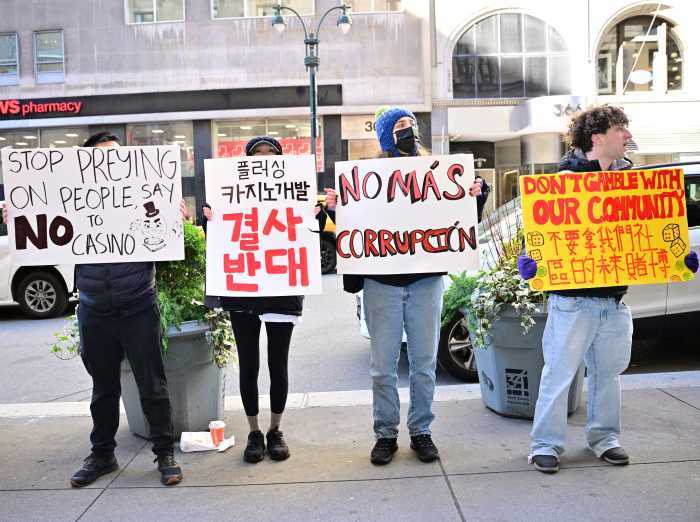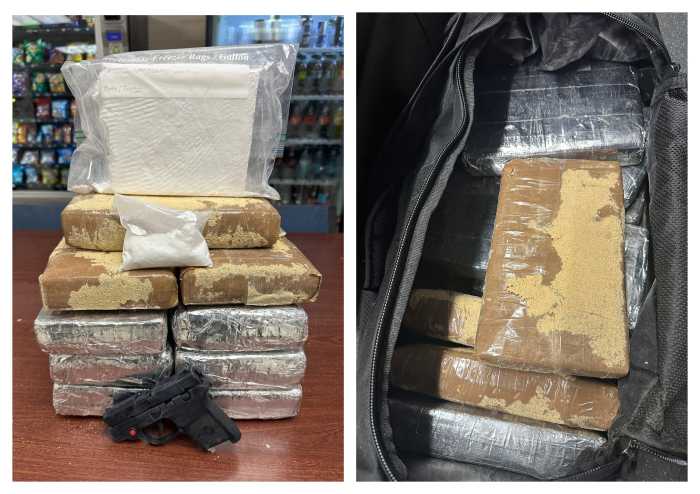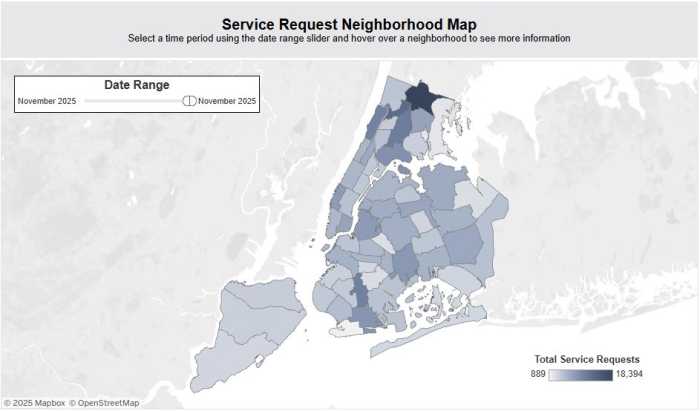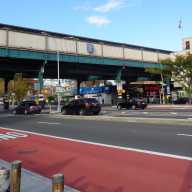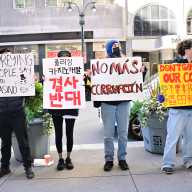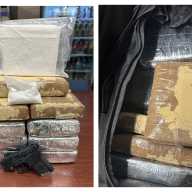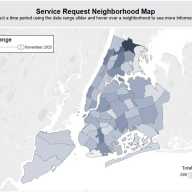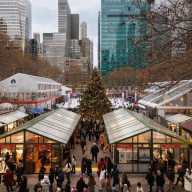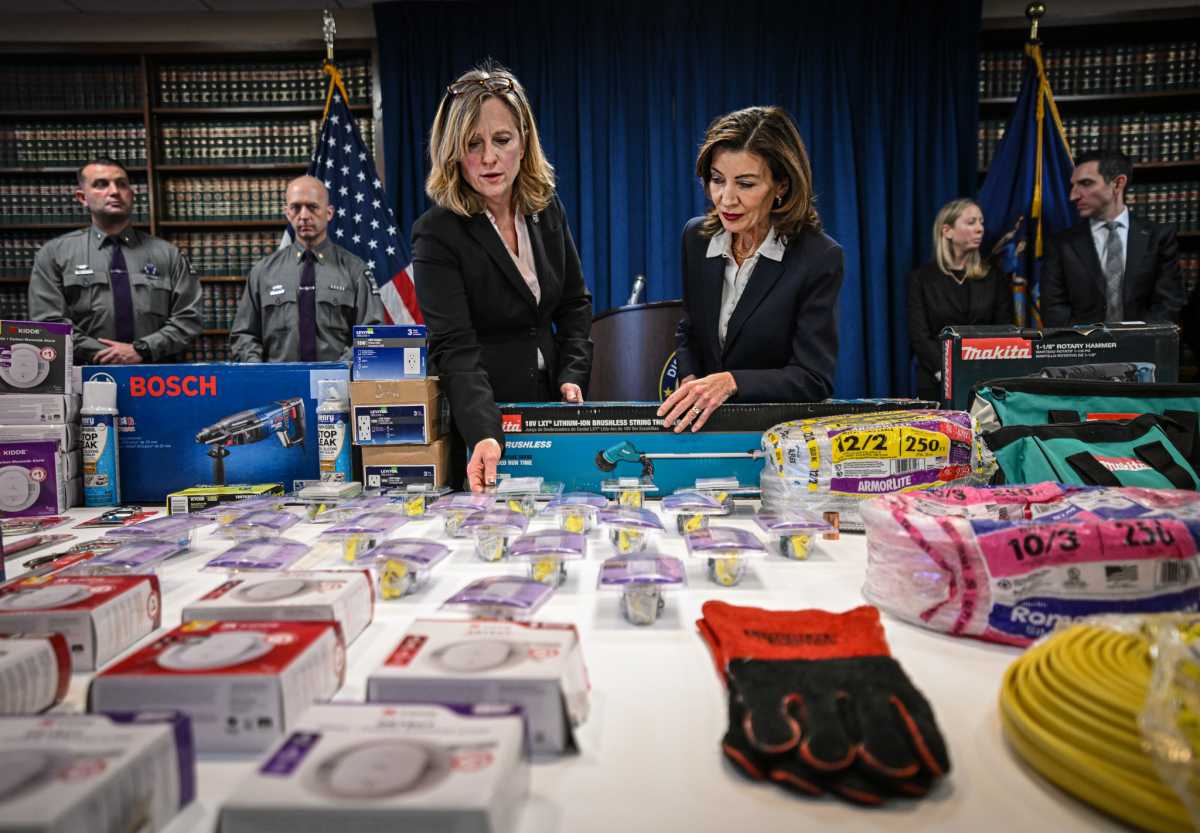Last night on Halloween Eve, streets in Queens and throughout New York City flooded due to heavy rainfall which left one man dead in Manhattan and another in Flatbush, both after becoming trapped in basements.
From 3 to 5 p.m., streets across Queens flooded due to blocked grates from both trash and autumn leaves, causing traffic delays and property damage. According to officials, around 2 to 3 inches of rain fell over just a couple of hours, despite forecasts predicting the storm would last at least eight hours.
The scenes of New Yorkers driving and trudging on foot through the dirty water and floating trash to get home, and the damage caused to houses sparked outrage on social media and from elected officials towards the city’s outdated infrastructure.
View this post on Instagram
“We find ourselves with these kinds of reports on an almost regular basis, as the infrastructure of the city has shown itself unable to keep up with rainfall that dwarfs the amount that our sewage system was built for more than 100 years ago,” said Assemblymember and mayoral candidate Zohran Mamdani. “The climate crisis is already here… the resilient infrastructure we need can no longer be denied.”
Last night’s storm broke several rainfall records across the city, including at LaGuardia Airport, which saw 2 inches of rain in just a few hours, which doubled the previous record last set in 1955.
High rainfall and extreme weather events have been on the rise in recent years. In 2021, Hurricane Ida led the the deaths of over a dozen Queens residents similarly stranded in basement apartments, according to the NYS Climate Change Impact Assessment, and 2023 the City recorded its second wettest Sept. to date prompting the rescue of several New Yorkers due to mass flooding of neighborhoods and transit systems.
On Thursday night, Bayside and Hollis were the worst affected neighborhoods in Queens. While there were no reports of anybody being harmed or killed by the flash floods in Queens, many residents are now forced to deal with property damage to their homes.
Heavily trafficked roads, such as the Cooper Avenue underpass in Glendale, also flooded due to clogged drainage grates. However, flooding of the underpass had been alleviated just a few hours later.
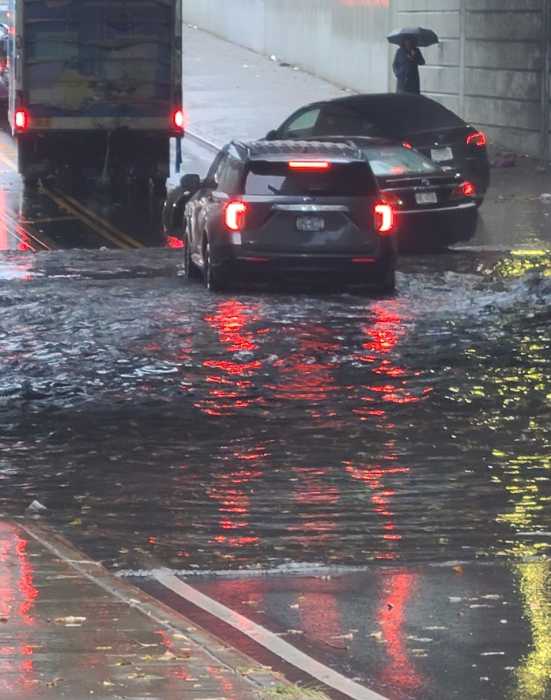
“We needed help on 77th Avenue from 84th Street to 86th. Flooding consumed roads and homes… we need system upgrade ASAP now,” wrote one anonymous resident in a post on the Middle Village Community Board’s Facebook. “Don’t knock or send junk mail when it’s time for term limits and you want our vote. We have to take matters into our own hands and help one another as I understand help has been asked for years and nothing.”
View this post on Instagram
The city’s long-term flood relief plan includes city and state funded combined sewer overflow (CSO) tunnel at Newton Creek. The CSO tunnel is undergoing the ULURP process and is considered a capital project of high priority that will reduce the number of floods, like last night, in the area by 25 times every year, according to one of the project managers. However, construction would not begin until April 2028 and be completed by 2040.
Mamdani highlighted the importance of investing in “floodable parks” and the cloudburst project, which was test piloted in Jamaica, Queens. The cloudburst project, overseen by the Department of Environmental Protection (DEP), replaces standard concrete with a more porous version that then leads to storage areas underground, such as the basketball courts a the South Jamaica Houses. In 2023, Mayor Eric Adams increased funding for cloudburst to around $400 million to incorporate four more neighborhoods under the biggest threat of floods from “extreme rainfall events.” Adams invested in other infrastructure projects to reduce flooding, such as adding 2,300 rain gardens last year to help with drainage across the city, increasing the total to 11,000.
Queens Community Board 5 held a committee meeting at St. Margaret’s Parish Hall in Middle Village Thursday while the flooding was still ongoing to listen to a presentation by Deputy Director of Landscape Architecture Tara Valenta, from the Department of Parks and Recreation (NYC Parks), on the latest design of Juniper Valley Park softball field, which is currently large concrete slab prone to flooding.
An NYC Parks project, the redesign does not include cloudburst technology, but will still completely overhaul the drainage of the area by replacing the broken clay pipes and including green spaces. The project officially began in the summer of 2024 and has been through four to five different designs at the behest of Council Member Robert Holden, who’s office is its primary funder of the $8 million project, and the surrounding community. A representative of NYC Parks at the meeting said that while the cloudburst project is effective, its approach to reinvest in the pipe infrastructure and adding green spaces would be just as effective to alleviate flooding in the park.
Sen. Joe Addabbo hears the complaints of flash flood dangers, and in 2023 began offering flood barriers that can be picked up at either of his offices for those who’s homes are in danger of flooding. While only a band-aid to aid homeowners during extreme rainfall, Addabbo agrees that the city’s infrastructure is not up to par to deal with floods of this magnitude and supported the City Planning Commission’s Yard Texts Amendment when he was a member of the city council. Approved in 2008, the amendment required planting for homeowners with front lawns and restricted paving over them in order to allow drainage in residential areas.
“You’re losing natural drainage in these overdeveloped areas,” Addabbo said. “We learned so much after Hurricane Sandy… how you mitigate water, since it has to go somewhere. It’s our constituents that drive the priorities, and if flooding is a priority, then you have to address it.”

